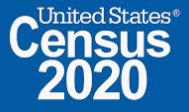 MADERA – The U.S. Census Bureau is now following up with households in California and across the that have not yet responded to the 2020 Census. The current self-response rate in California is 64.5%. The Census Bureau will need to visit the remaining addresses to collect responses in person.
MADERA – The U.S. Census Bureau is now following up with households in California and across the that have not yet responded to the 2020 Census. The current self-response rate in California is 64.5%. The Census Bureau will need to visit the remaining addresses to collect responses in person.
Households can still respond now by completing and mailing back the paper questionnaire they received, by responding online at 2020census.gov, or by phone at 844-330-2020. Households can also respond online or by phone in one of 13 languages and find assistance in many more. Those that respond will not need to be visited to obtain their census response.
What Households Can Expect
The Census Bureau will provide face masks to census takers and requires that census takers wear a mask while conducting their work. They will follow CDC and local public health guidelines when they visit. Census takers must complete a virtual COVID-19 training on social distancing protocols and other health and safety guidance before beginning their work in neighborhoods.
Census takers are hired from local communities. All census takers speak English, and many are bilingual. If a census taker does not speak the householder’s language, the household may request a return visit from a census taker who does. Census takers will also have materials on hand to help identify the household’s language.
If no one is home when the census taker visits, the census taker will leave a notice of their visit with information about how to respond online, by phone or by mail. People are encouraged to cooperate with census takers and ensure that everyone who was living in their household as of April 1, 2020, is counted.
Census takers can be easily identified by a valid government ID badge with their photograph, a U.S. Department of Commerce watermark, and an expiration date on the badge.
The U.S. Constitution mandates a census of the population every 10 years. The goal of the 2020 Census is to count everyone who lives in the United States on April 1, 2020 (Census Day). Census statistics are used to determine the number of seats each state holds in the U.S. House of Representatives and informs how billions of dollars in federal funds will be allocated by state, local and federal lawmakers annually for the next 10 years.
For more information, visit 2020census.gov.















































